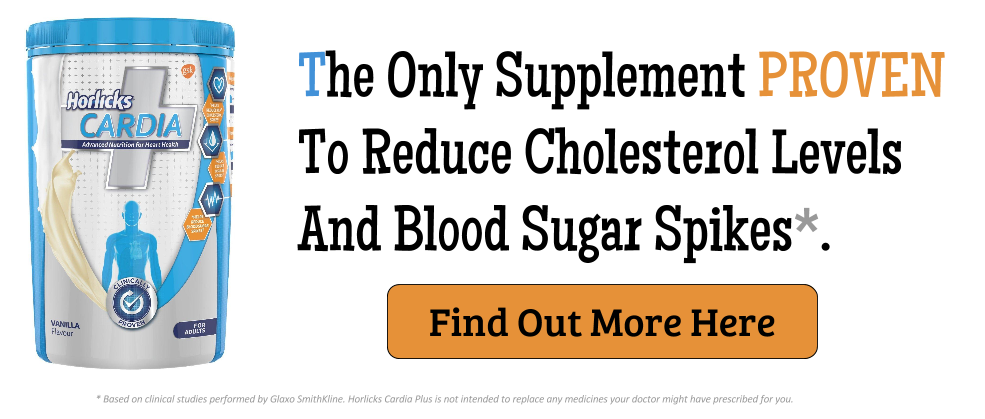If you undergo a routine blood test and find that your sugars are slightly high, don’t blame the chocolate you had earlier in the day. You may actually have prediabetes.
Prediabetes has gained importance in the recent years. This is because prediabetes is a precursor for diabetes.
In other words, if you have prediabetes, then there is a high chance you will develop diabetes, and quite soon.
What Is Prediabetes?
Prediabetes is a condition where blood glucose levels are raised, but not high enough to be labelled diabetes.
Diabetes is defined as a fasting sugar of over 126 mg/dl. A normal fasting blood sugar lies below 100 mg/dL.
In prediabetes, the fasting sugar is between 100 mg/dL to 126 mg/dL.

Why Is Pre-diabetes Important?
Pre-diabetes is very common in India, with over 10 million people already suffering from this condition.
If you have pre-diabetes, you are highly likely to get diabetes. However, this is not a certainty.
It is estimated that only 5 – 10% of people with pre-diabetes develop diabetes within a year. These numbers may not be truly reflective of the Indian population however.
In total, it appears at least 70% of people with pre-diabetes will develop diabetes in their lifetime.
As you will very well know, diabetes has a number of different complications. These can greatly affect the quality of life of the affected person.
It is therefore extremely important for all people with pre-diabetes to look after their health as though they have diabetes. The same precautions and the same lifestyle apply.
How Does Pre-diabetes Develop?
From clinical studies, it appears pre-diabetes develops in a multi-stage manner.
The Indian (and South Asian) people are inherently resistant to the action of insulin. As you will know, insulin is a hormone secreted by the pancreas that helps maintain normal glucose levels. Due to some genetic variations, Indians are resistant to the effects of insulin.
This is called insulin resistance.

If you are insulin resistant, your body does not respond normally to glucose that enters the blood following digestion of food. When food is digested, glucose is released which is absorbed through the intestine and into the blood stream.
This glucose provides energy to all the cells and tissues in the body, including the vital organs and muscles. In order for it to do that, it needs the help of insulin. Insulin holds on to glucose and helps it enter the cells.
If the body is sensitive to insulin, then glucose will enter the tissues to provide energy to the tissues. However, if the body is resistant, then it will not enter the cells and will remain in the blood stream. This is the early stage and is called prediabetes.
Who Is At Risk Of Pre-diabetes?
Those who are obese or overweight are at risk. If you have a family history of diabetes, then you may be at risk.
Those who do not exercise on a regular basis are also at risk of prediabetes. Indulging in junk food, sugar sweetened drinks and processed meats also increases your risk.
Women who suffered from gestational diabetes are also at risk of developing prediabetes later in life. Not only that, their children are also at risk.
Women who suffer from polycystic ovarian syndrome are at risk of prediabetes.
1. Family history of diabetes
2. The presence of heart disease
3. Obesity or being overweight
4. Lack of exercise, sedentary lifestyle
5. Asian ethnicity
6. History of gestational diabetes
7. Polycystic ovarian syndrome
8. Certain medication such as anti-depressants and anti-psychotics
9. High blood pressure
10. High triglyceride and low HDL levels
Individuals over the age of 45 years have a higher chance of developing prediabetes.
Prediabetes is often associated with high blood pressure. In addition to this, cholesterol levels may be elevated, particularly the bad LDL and triglyceride level. The good HDL cholesterol levels will be low.
What Are The Symptoms And Signs Of Prediabetes?
Most people who have prediabetes do not have any symptoms.
However, some people may notice darkening of the skin in areas like the back of the neck, arm pits, knuckles and knees.
If prediabetes is approaching diabetes, then patients may develop the typical symptoms of diabetes, which are illustrated in the image below.

Diagnosis
Diagnosis of prediabetes is made through a simple blood test.
The parameters required to make a diagnosis include fasting blood glucose, glycosylated hemoglobin and post prandial glucose.
In pregnant women, an oral glucose tolerance test is useful in diagnosing both prediabetes and diabetes. A blood sugar level from 140 to 199 mg/dL is considered prediabetes. This is sometimes referred to as impaired glucose tolerance.
Once a diagnosis of prediabetes is made, your doctor may recommend testing every 6 months to 1 year to ensure diabetes has not set in.
Treatment Of Prediabetes
The most important treatment strategy in managing prediabetes is changing your lifestyle.
Opt for healthy, low calorie foods. Avoid simple carbohydrates ( polished rice and products made with this). Consume fresh fruits and vegetables. Choose whole grain foods instead as these have a low glycemic index and keep the sugar well controlled.
 A high fiber diet can help you take good control of your blood sugar levels. Soluble fiber has been proven to reduce blood sugar spikes after meals. Good sources of soluble fiber include oats, legumes and flaxseeds, along with fruits and vegetables.
A high fiber diet can help you take good control of your blood sugar levels. Soluble fiber has been proven to reduce blood sugar spikes after meals. Good sources of soluble fiber include oats, legumes and flaxseeds, along with fruits and vegetables.
If you are unable to get a good food source of soluble fiber, then you could find a suitable supplement like this one online.
Exercise regularly for about 45 to 60 min per day. This should include moderate intensity aerobic exercise. Not only will this control your blood sugars; it will also control your weight and strengthen your heart.
Studies have shown that reducing your body weight by just 10% can significantly reduce your chances of developing diabetes.
Finally, stop smoking. Make sure you take any medicines that your doctor has prescribed for you regularly and without fail.
Closing Remarks
Prediabetes is a precursor for diabetes, and has the same complications as diabetes. Take the right steps today to prevent it from getting worse.
Other articles by Dr Vivek Baliga
Connect with Dr Vivek Baliga on LinkedIn – Click here
- Understanding Iron Deficiency Anemia: A Guide for Patients - May 31, 2025
- CT Coronary Calcium Score: A Guide for Patients - January 7, 2024
- Gastric Antral Vascular Ectasia (GAVE) – Causes, Diagnosis, and Treatment - August 5, 2023


I would like to attract your attention toward this widely acclaimed book, “The Case Against Sugar” by Gary Taubes. Your Review of, and opinion on , the book is appreciated.
More Info:
http://garytaubes.com/works/books/the-case-against-sugar-2016/
http://www.nytimes.com/2017/01/02/books/review/case-against-sugar-gary-taubes.html
Thank you for your comment. I will most certainly look into it.